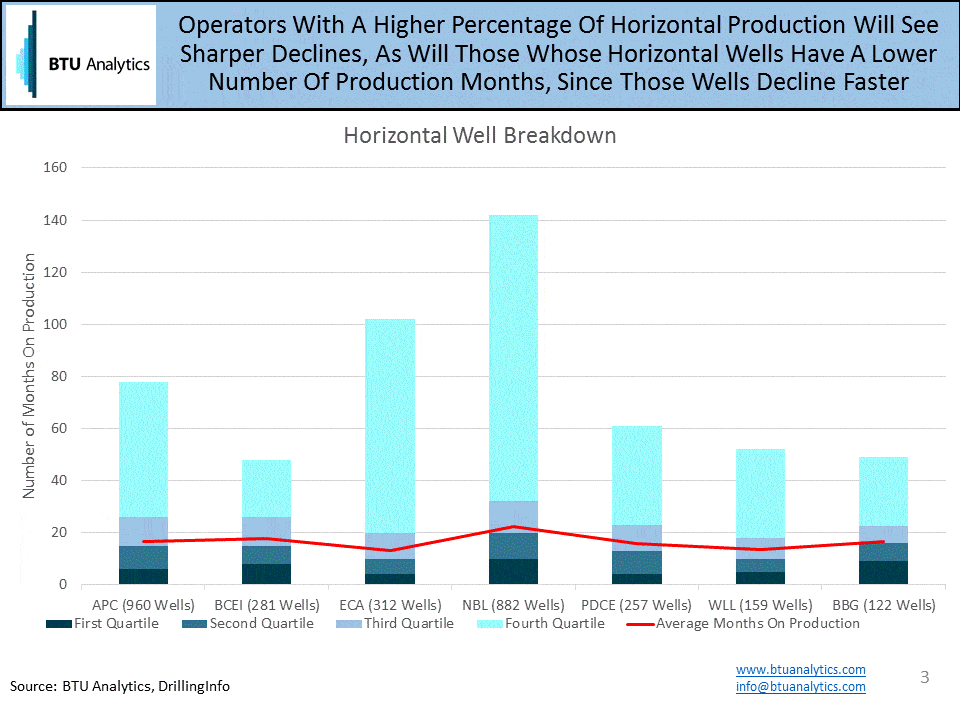At BTU Analytics, we are always looking for new ways to use data. One thing that we have now done is put together an application that allows us to look at Proved Developed Producing (PDP) production for major basins by the operators that are in those basins. PDP is an extremely important component of a company’s production profile, since it represents the revenue that could be generated if they were unable to access capital to drill new wells. Additionally, it shows how much it would really take to slow production down, since even if prices got so low that new drilling could not occur, there would still be PDP production.
To demonstrate the capabilities of this PDP calculator, the numbers have been run for some of the top producers in the DJ Basin, including Anadarko (APC), Bonanza Creek (BCEI), Encana (ECA), Noble (NBL), PDC Energy (PDCE), Whiting (WLL), and Bill Barrett (BBG). The first graphic below shows our current results for PDP natural gas production for each of these companies.

As seen above, there are very different magnitudes of PDP production for each operator. APC has the largest volume of gas, however right away you can see that while each of these has a different number, the rate in which they are changing is varying from operator to operator. One of the most apparent places this occurs is comparing APC and NBL production. In the first month, APC has about 150 MMcf/d more production than NBL. However, at the end of our given time frame, that difference has fallen to 20 MMcf/d, which means that the PDP APC has is declining faster than NBL.

The above graphic shows the comparison of the yearly declines for each operator. Again, the difference between APC and NBL is highlighted here, showing that APC production declines by 32% in the first year, where NBL only declines 20%.
A key to understanding the differences between these operators is to consider how many wells are making up this decline profile, as well as how long they have been online, and whether they are horizontal or vertical. The below graphic highlights some of this information.

With the information above, consider the following and how they affect declines:
- Horizontal wells will decline faster in the first few years of the wells production than vertical wells will
- Wells that have been online for a shorter time will decline faster than those that have been online longer
- The more wells an operator has, the larger its initial volume will be
Given these guidelines, it becomes easy to see why someone like BBG has a higher PDP decline (as in chart 2) and has a smaller volume of PDP to begin with (as in chart 1). BBG has the fewest number of wells contributing to PDP, and they have a large percentage of wells that have not been online for long (75% of their horizontal wells have been online for 20 months or less). These numbers will lead to sharper overall declines.
The differences in producers PDP declines is a big key to understanding the position of the operator. Companies with larger PDP volumes and shallower declines will have an advantage in commodity price environments similar to the one we are in now.
For more information on oil and gas PDP, request a copy of BTU Analytics’ Upstream Outlook.
Other Blogs on PDP:
Associated Natural Gas PDP Warrants Close Watching – March 4, 2016
Today’s Monster Wells Are the Long Tails of Tomorrow – September 16, 2014









